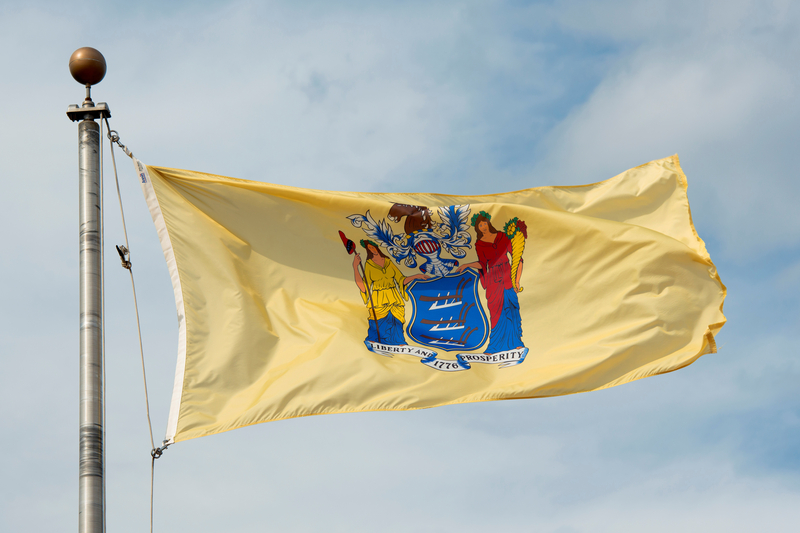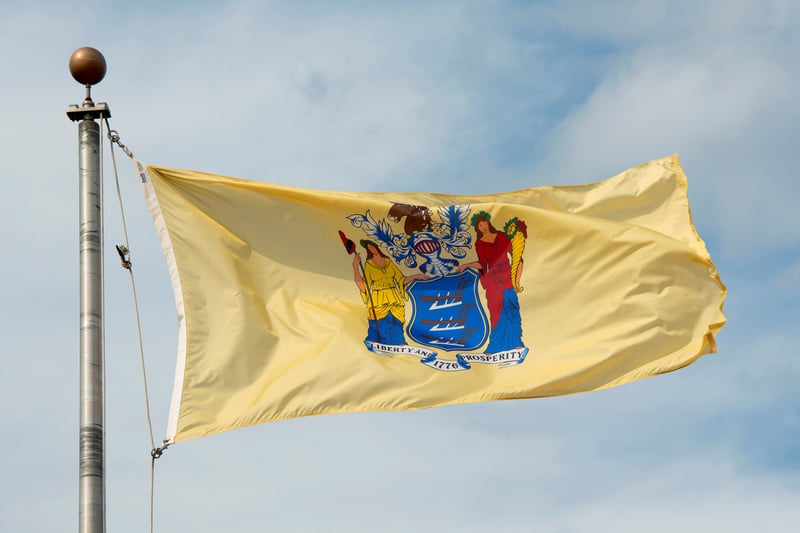
While the current flag is steeped in history, some argue that it doesn’t resonate with the modern identity of New Jersey. The design is often seen as outdated and not easily recognizable compared to other state flags. As states like Mississippi have recently redesigned their flags to better reflect contemporary values, it’s worth considering if New Jersey could benefit from a refresh.
Simplification: One approach could be to simplify the flag’s design. Stripping down the elements to a more minimalist design could make the flag more iconic and easier to recognize. For example, a single bold symbol like the horse head from the crest, set against a modernized buff background, might work well.
Incorporating Modern Symbols: Introducing new symbols that reflect New Jersey’s current identity could be powerful. For instance, adding elements that represent the state’s diverse population, its industrial history, or its coastline could make the flag more relatable to its residents.
A Fresh Color Palette: Keeping the historic blue and buff but introducing a modern twist with more vibrant hues might make the flag more visually appealing. Alternatively, adding a new color that reflects New Jersey’s natural beauty, like a green to represent its nickname, the “Garden State,” could be effective.
Acknowledging History and Progress: A design that pays homage to New Jersey’s role in American history while also celebrating its evolution could strike a balance between old and new. Perhaps a flag that merges historic symbols with contemporary design elements, like clean lines and modern fonts, would resonate with a broader audience.
Here’s what the flag elements stand for:
State Flag
The New Jersey State Flag was adopted in 1896. Its official color is buff, a yellowish-tan color. George Washington chose buff and dark blue (Jersey blue) for the flag of New Jersey’s army regiments during the Revolutionary War. The state seal is featured on the flag.
State Seal
Pierre Eugene du Simitiere created New Jersey’s State Seal in 1777. It contains five symbols, each of which represents something about New Jersey.
• Helmet and Horse Head
The helmet and the horse’s head crest represent New Jersey’s independence as a state. They also represent New Jersey’s status as one of the first states. In 1787 New Jersey was the third state to sign the U.S. Constitution.
• Liberty
The woman holding a staff with a liberty cap on top is Liberty, who represents freedom. In ancient Rome, former Roman slaves saw a liberty cap as a badge of freedom. Liberty caps became popular again during the Revolutionary War.
• Ceres
The woman on the right is the Roman goddess of grain, Ceres. She holds an ice-cream-cone-shaped basket, called a cornucopia, filled with the many fruits and vegetables produced in New Jersey.
• Shield
The three plows on the shield symbolize the agricultural tradition of New Jersey.
• Scroll
The state’s motto “Liberty and Prosperity” is written on the scroll. 1776 is the year New Jersey became a state.
While the current New Jersey flag honors the state’s deep historical roots, there’s room to consider a design that better captures its modern identity. Whether through simplification, introducing new symbols, or refreshing the color scheme, a new flag could help bring New Jersey’s past and present together in a way that resonates with all its citizens.

